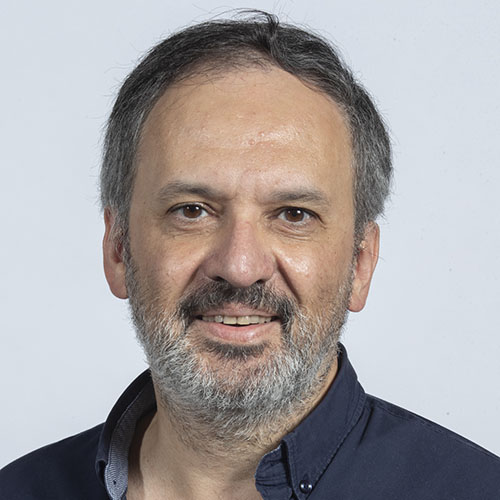What we do
About our project
This large project took more than 4 years to complete, and was funded by the American National Basketball Association (NBA) and GE Healthcare.
Patellar tendinopathy is a common chronic tendon injury that is characterized by load-related pain in the patellar tendon. As many as 45% of elite athletes in jumping sports like basketball and volleyball suffer from patellar tendinopathy. This often results in prolonged sport absence, which hampers an individual’s athletic performance and the health-related benefits of physical activity.
Eccentric exercise therapy (EET) has strong evidence of effectiveness for patellar tendinopathy and is also supported in medical guidelines. However, EET is pain-provoking and the therapeutic effects on pain and functional outcome are debated when applied during the competitive season. These limitations could be overcome by performing progressive tendon-loading exercises (PTLE) within the limits of acceptable pain.
Our aim was to compare the effectiveness of progressive tendon-loading exercises (PTLE) with eccentric exercise therapy (EET; usual care before the start of the project) in patients with patellar tendinopathy.
Methods of our project
Methods
In a stratified, investigator-blinded, block-randomised trial, 76 athletes with clinically diagnosed and ultrasound-confirmed patellar tendinopathy were included.
Patients were randomly assigned to PTLE within the limits of acceptable pain (interventional treatment) or pain-provoking EET (control treatment) during 24-weeks.
The PTLE protocol consisted of the following phases:
Stage 1: daily isometric exercises (single-leg leg-press or leg-extension, 5 repetitions of 45-second mid-range (60° knee flexion) quadriceps isometric hold at 70% of maximum voluntary contraction).
Stage 2: isometric exercises of stage 1 on every first day, and new isotonic exercises performed on every second day. The isotonic exercises were also performed as a single-leg leg-press or leg-extension, and started with 4 sets of 15 repetitions between 10-60° of knee flexion and slowly progressed to 4 sets of 6 repetitions with increasing load and knee angles between almost full extension and 90° flexion.
Stage 3: plyometric (energy-storage) loading and running exercises (jump squats, box jumps and cutting manoeuvers) on every third day, starting with 3 sets of 10 repetitions using both legs and slowly progressed to 6 sets of 10 repetitions using one leg. Isometric and isotonic exercises were continued on every first and second day, respectively.
Stage 4: sport-specific exercises, which were characteristic for the type of sport (e.g. basketball, volleyball). Patients were instructed to gradually return to sport-specific training, performed every 2-3 days to allow for recovery from high tendon-loading exercises. In this stage, the isometric exercises of stage 1 were continued on days that the sport-specific exercises were not performed.
Progression to each subsequent stage was defined using individualised progression criteria, based on the level of pain experienced during a pain provocation test that consisted of one single-leg squat. If the VAS-score was 3 or less and exercises of the stage were performed for at least one week, progression to the next stage was advised. When all the exercises in stage 4 were performed within the limits of acceptable pain (VAS score ≤ 3 points), return to competition was recommended. In this phase, stage 1 and 2 maintenance exercises were advised twice per week.
The primary end point was clinical outcome assessed with the validated Victorian Institute of Sports Assessment (VISA-P) questionnaire after 24 weeks. Secondary outcomes included the return to sports rate, subjective patient satisfaction and exercise adherence.
Results
Between January 2017 and July 2019, a total of 272 applications from potentially eligible athletes with suspected patellar tendinopathy were screened, of which 101 athletes were invited for eligibility assessment. Twenty-seven of these athletes were excluded, leaving 76 eligible patients remaining for inclusion.
The population (mean age, 24 years, 76% male) consisted of patients with mostly chronic patellar tendinopathy (median symptom duration 2 years). Most patients (82%) underwent prior treatment for patellar tendinopathy but failed to recover fully. 38 patients were randomised to the PTLE-group and 38 patients to the EET-group.
The improvement in VISA-P score was significantly better for PTLE than for EET after 24 weeks (28 vs.18 points, adjusted mean between-group difference, 9 (95% confidence interval, 1 to 16); P=.023). There was a trend toward a higher return to sports rate in the PTLE-group (43% vs. 27%, P=.13). No significant between-group difference was found for subjective patient satisfaction (81% vs. 83%, P=.54) and exercise adherence between the PTLE-group and EET-group after 24 weeks (40% vs. 49%, P=.33).
Conclusions
In patients with patellar tendinopathy, PTLE resulted in a significantly better clinical outcome after 24 weeks than EET. PTLE are superior to EET and are therefore recommended as initial conservative treatment for patellar tendinopathy.
Funds & Grants
Collaborations
E. Visser, Sportgeneeskunde Rotterdam, The Netherlands




